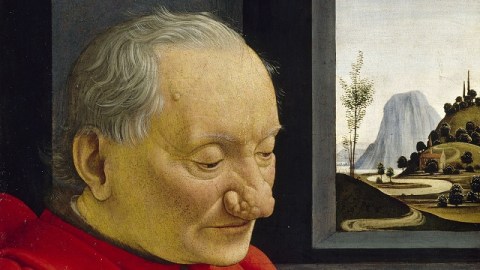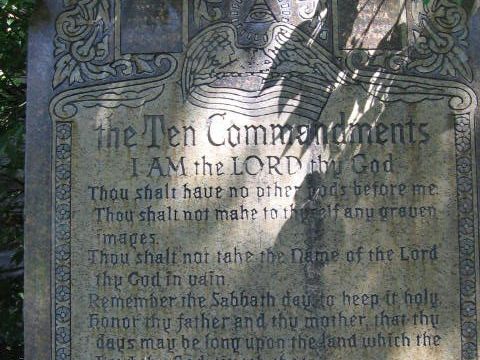Why the Renaissance Model of Portraiture Endures

What is that “Presidential” look? Consciously or subconsciously, American voters ask themselves that question every four years on the way to the ballot box. Is it the Mount Rushmore-ready chin, the never-retreating hairline, or the ideally symmetrical smile to which we surrender our hearts? Portraits of power go back to the beginning of recorded history, but, as The Renaissance Portrait from Donatello to Bellini, which runs at the Metropolitan Museum of Art through March 18, 2012, shows, it was the artists of the Renaissance who resurrected Greek and Roman models and modernized them for their day and our own. Since the Renaissance, portraiture continues to be more about conveying character than fidelity of representation. The Renaissance portrait endures today because portraits continue to be more about identities than about appearances. The nose (and the eyes, chin, etc.) knows who we are and reveals it to all the world.
The exhibition brings together 160 works (many of which are rarely loaned internationally) to provide a full survey of the art of the period. Art from both the familiar places (Papal Rome, Florence, and Venice) and lesser-known courts (Ferrara, Mantua, and Bologna) portrays the major players and their circles in vivid detail. “Although humanism, with its basis in the literary culture of Greece and Rome, provided a shared intellectual language throughout the Italian peninsula,” explain the exhibition catalog editors in their preface, “political, economic, and social circumstances differed profoundly from one place to another, and these differences are inevitably reflected in the kinds of portraits favored in each region and the uses to which they were put.” Throughout the catalog, the editors and essays chip away at the often monolithic term “Renaissance” to distinguish not only different artists but different environments in which the art flourished and served the needs of the time and place. For anyone overwhelmed by the vast, sometimes foreboding forest of Renaissance art, The Renaissance Portrait from Donatello to Bellini will guide you safely through the trees.
Throughout the catalog and the exhibition, the organizers stress that Renaissance portraiture is decidedly not about getting a true likeness—“true” being photographic realism. Instead, these portraits are “conveyors of social conventions and cultural identities.” For the Renaissance viewer (and us still today), the portrait “transform[s] physiognomies into cultural signifiers: the elegance of a high forehead, the nobility or disdain of a raised brow, the aristocratic curve of a nose, and the strength or weakness of a chin and jaw—all physiognomic traits transformed into emblems of beauty, position, and power.” As Stefan Weppelmann explains in his catalog essay, when Donatello sculpted a reliquary bust of Saint Rossore in 1425 (making it the oldest portrait in the exhibition), he had no physical description to follow, so he simply made it up. Donatello employed “individualized features that signify verisimilitude yet are unrelated to any prototype in the mimetic sense,” Weppelmann writes, revealing the secret of the magic trick behind the Renaissance portrait: what seemed the most real wasn’t, but still mattered the most.
A big part of the trick for the artist, as Patricia Rubin writes, was “skillfully balanc[ing] the demands of immediate recognition with those of long-term recollection.” The painter or sculptor could push the envelope of realism only so far in the pursuit of aggrandizement. Pisanello, the go-to portrait medalist of the era, “created a sophisticated balance of idealization, emblematic allusion, and attractively detailed naturalism in his paintings and medals that became the mode for a generation of the ruling elite of the Italian peninsula,” Rubin explains. At the other end of the spectrum, Andrea Mantegna refused to flatter his subjects in his portraits, thus putting himself out of the game other artists were quite willing to play. Although Leonardo da Vinci appears in the show only through one drawing, Weppelmann positions him as central in this “expansion from likeness to expressivity” in Renaissance portraiture. da Vinci “heighten[ed] the individual qualities capable of objective depiction but link[ed] them with the subjective quality of personal style and includes in it the possibility (and necessity) of artistic construction and allegory,” according to Weppelmann. The enigmatic smile of the Mona Lisa epitomizes this da Vincian power to turn a believable face into a believable legend.
Up until the 15th century, few portraits depicted people who weren’t powerful or famous. The Renaissance portrait, however, sounded a fanfare for the common man and woman. Women finally could be depicted as individuals rather than bloodless ideals. Men could be shown warts and all. In Domenico Ghirlandaio’s Portrait of an Old Man and a Boy (detail shown above), one of the superstars of the show, an old man suffering from rhinophyma looks affectionately upon a young boy who may be his grandson. The identity of the man has been lost, so the relationship’s unclear, but the warmth and humanity of the man are completely clear. By so openly and honestly painting the man’s affliction, Ghirlandaio conveys the emotional openness and honesty of man depicted. You can explain the entire humanist belief system originating in the Renaissance and enduring to our time in that misshapen, beautiful schnoz.
The Renaissance Portrait from Donatello to Bellini takes the otherworldly beauty of the Renaissance and grounds it in the humanism it originally sprung from. Although the powerful figures still dominate, their humanity emerges, as well as the humanity of those whose only power remains the ability to make us feel how they felt just by looking at their face. The next time you look at a portrait—of a child or a political candidate—remember that you’re looking through the eyes of the Renaissance.
[Image:Domenico Ghirlandaio (Domenica Bigordi; Florence, 1448/49-1494, Florence). Portrait of an Old Man and a Boy (detail), ca. 1490. Tempera on wood, 24 ¾ in. x 18 ¼ in. Département des Peintures, Musée du Louvre, Paris.]
[Many thanks to the Metropolitan Museum of Art for providing me with the image above and other press materials related to The Renaissance Portrait from Donatello to Bellini, which runs through March 18, 2012. Many thanks also to Yale University Press for providing me with a review copy of the exhibition catalog, which was edited by Keith Christiansen and Stefan Weppelmann.]





